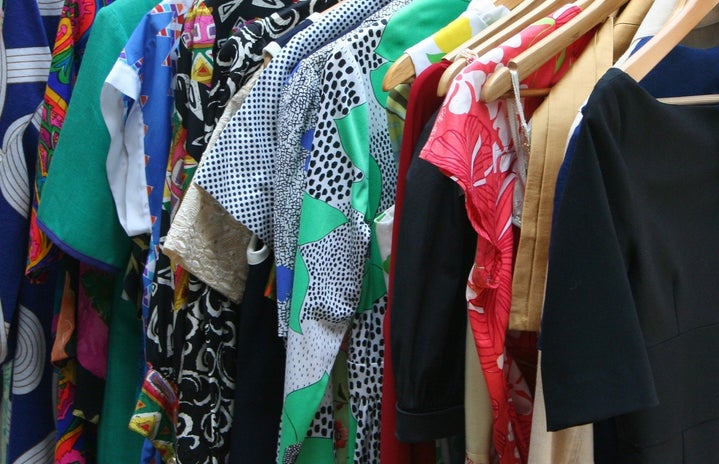Fashion has been an important part of expression for people for a very long time. Style has changed dramatically in the past few centuries, however, in the past few decades, trends seem to come and go extremely rapidly. These constantly changing styles and trends are causing a surge in consumption, which has downfalls that not everyone sees.
Dynamic trends cause a large turnover in many people’s closets. Annually, the average American purchases 70 new articles of clothing and throws out 80 pounds of clothes (ref. link 1). Because items go in and out of style so often, the landfills and atmosphere are becoming increasingly polluted. 87% of the fabrics we consume end up in a landfill or burned (ref. link 3). These fabrics take a very long time to decompose, and will eventually leach their chemicals into the ground.
With the variety of options and increasing consumption levels, people have more choices than ever, and companies are attempting to keep up with their ever-changing demands. In order to do this, companies must produce quickly. Fast fashion companies have a goal of keeping up with dynamic trends, while making clothes more affordable. Sounds great right?
Well no, not really. In order to keep up and make money, companies take a few shortcuts, while often compromising the quality during production, “Fast fashion utilizes trend replication, rapid production, and low-quality materials in order to bring inexpensive styles to the public” (ref. link 2). Shops like Romwe, Fashion Nova, Zara and Forever 21, for example, offer unbeatable prices for up to date fashion trends. However, there are drawbacks to the way that these clothes are produced. The industry has a number of harmful practices that affect many people, and the environment.
Clothing is a part of a long supply chain, and one of the first steps to any clothing piece is fabric production. The materials in synthetic fabrics like polyester, spandex, and nylon are extremely wasteful, and create a large amount of pollution. These fabrics use approximately 342 million barrels of oil per year (ref. link 3) and require 200 times their weight in water for production (ref. link 4). The impact of the extraction and transportation of these resources only adds to the waste. This rising use of textile treatment and dyes contribute to 20% of industrial water pollution and is making many people around the world sick (ref. link 3).
Not only is fast fashion an environmental problem, it’s also a social problem. In most countries where fast fashion production takes place, the minimum wage for workers is two to five times lower than a family needs in order to meet their basic needs (ref. link 4). These employees work 14-16 hours seven days a week in order to get paid much less than what they deserve or need to survive. The conditions of the workplace are also very concerning. There are countless toxic chemicals in the air with no filtering, and massively unsafe buildings. In 2013, 1,134 people died working in a garment factory in Bangladesh because of a building collapse (ref. link 4). Every day when these workers go in they are subject to great danger, and are receiving inadequate compensation in order to fill our own personal needs for consumption.
This information is daunting, especially to people like me who love to shop. One of the most important things you can do to decrease your impact is to extend the life of your clothing, “Just by wearing your clothes nine months longer, it can reduce your carbon footprint for that garment by 30%” (ref. link 4). Purchasing used clothes instead of new also reduces impacts. In order to protect our environment, as well as unfair and unsafe labor practices, we must educate ourselves, others, and say no to fast fashion as often as possible.
-
https://qz.com/1212305/americans-have-stopped-trying-to-stuff-more-clothes-into-their-closets/
-
Hasan Minhaj; The Ugly Truth of Fast Fashion, Patriot Act, Netflix.
-
https://www.sustainyourstyle.org/en/whats-wrong-with-the-fashion-industry#anchor-fast-fashion



